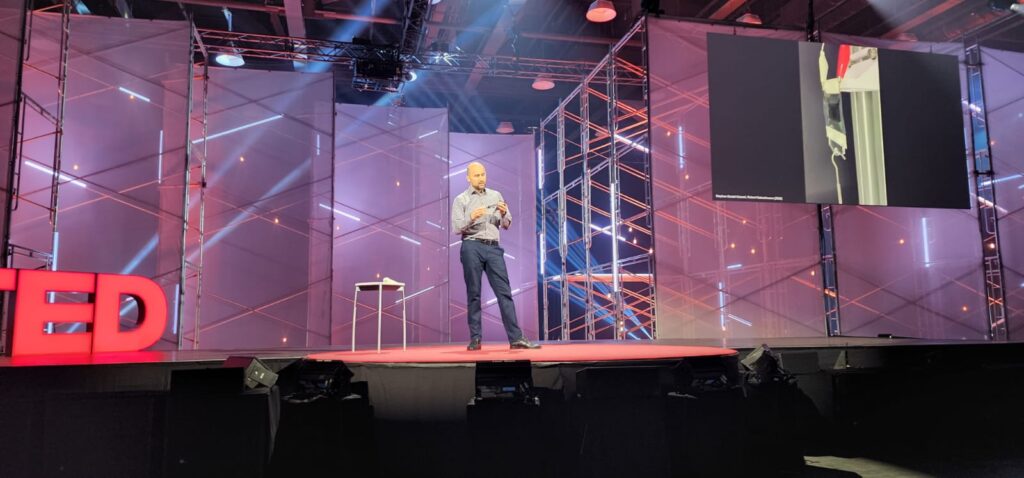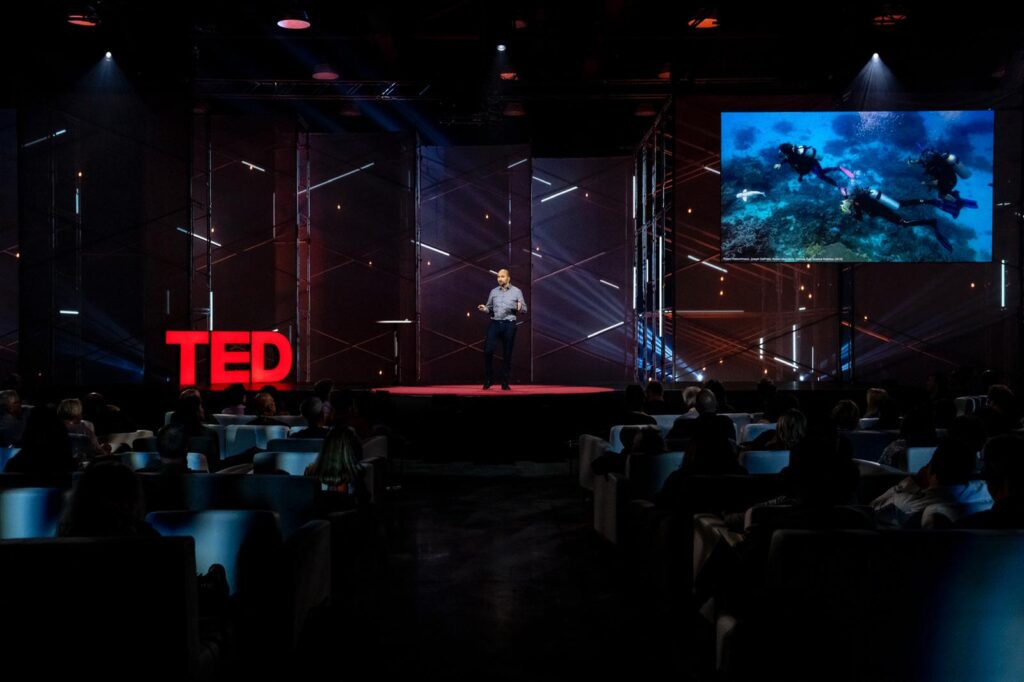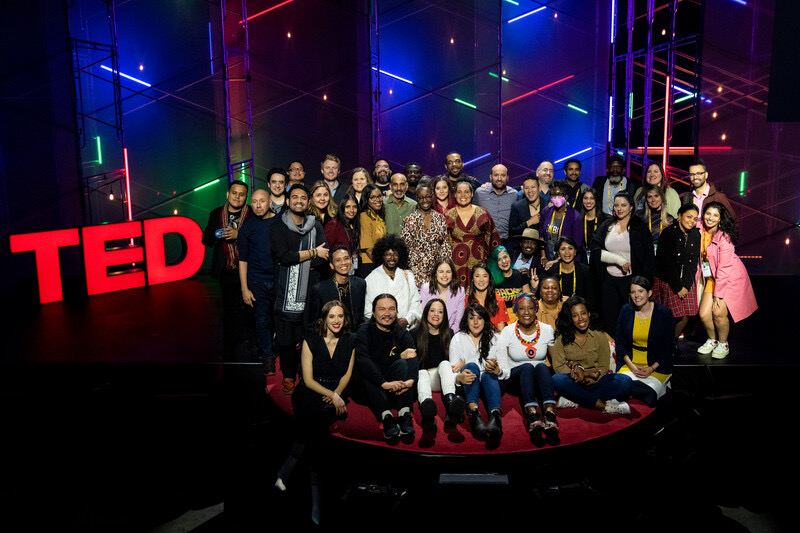My name is Robert Katzschmann, I am running the Soft Robotics Lab at ETH Zurich. My group is developing robots to explore the world above and underwater. We design robots to closely imitate nature and provide safer interactions with natural life – features that are hard to achieve with traditional, hard-bodied robotic systems. For example, our swimming robots can spy on marine life and serve as a platform for other researchers to track the impacts of climate change.
Earlier this year in April I had the chance to give a TED talk in Vancouver, Canada. This talk will be released this week for the public. To give you a little bit of background on why I am curious about building robots that better integrate with us and nature, I need to go back in time. When I was a child, my mother made me aware of the fact that much of the noise surrounding us stems from modern machines, which are just a recent invention from about 200 years ago.
Earlier this year in April I had the chance to give a TED talk in Vancouver, Canada. This talk will be released this week for the public. To give you a little bit of background on why I am curious about building robots that better integrate with us and nature, I need to go back in time. When I was a child, my mother made me aware of the fact that much of the noise surrounding us stems from modern machines, which are just a recent invention from about 200 years ago.










